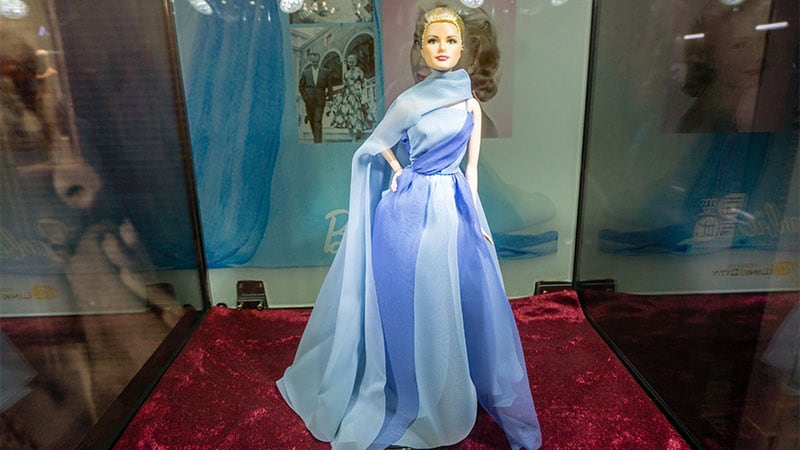Mattel, the US-based company behind the Barbie brand, launched its first Barbie doll designed with features of type 1 diabetes ( T1D). “Introducing a Barbie doll with T1D marks an important step in our commitment to inclusivity and representation,” said Krista Berger, senior vice president of Barbie and global head of Dolls. “Barbie helps shape children’s early perceptions of the world, and by reflecting medical conditions like T1D, we ensure more kids can see themselves in the stories they imagine and the dolls they love.”
Rising Numbers
T1D is a chronic autoimmune condition that affects millions of individuals, including children and adolescents, worldwide. To ensure that the new Barbie doll accurately represents the lived experience of individuals managing this condition, Mattel partnered with Aide aux Jeunes Diabétiques, a French charity that supports young people with diabetes, and Breakthrough T1D (formerly JDRF), a global organisation focused on research, advocacy, and improving care for people with T1D.
These collaborations helped ensure that the doll’s features, including the use of real-world medical devices such as a continuous glucose monitor and insulin pump, reflected the current standards in diabetes management. The aim was to promote inclusion and awareness by representing the everyday reality of children with T1D. The new Barbie doll features:
- Continuous glucose monitor: The doll wears a continuous glucose monitor on her arm to support blood glucose management in T1D. These small, wearable devices measure glucose levels continuously throughout the day. The sensor is secured with heart-shaped medical tape in Barbie pink, and the doll includes a phone that displays a monitoring app used to track glucose levels in real time.
- Insulin pump: Attached at her waist, the insulin pump is a small wearable device that delivers insulin automatically, as needed. This method of insulin administration is widely used by individuals with T1D to maintain stable blood glucose levels.
- Blue polka dot outfit: The doll wears a polka dot top and matching ruffled skirt. Both the blue colour and circular print are recognised global symbols for diabetes awareness, including the blue circle associated with World Diabetes Day.
- Pastel blue handbag: The doll carries a pastel blue handbag intended for essential items, such as diabetes supplies or snacks. This detail reflects the everyday practical needs of individuals managing T1D, including the need to prevent or treat hypoglycaemia when away from home.
Ambassadors
To launch its Barbie doll featuring T1D, Mattel chose the French karate champion, Alizée Agier, as ambassador. Agier won the world championship in 2014 and European titles in 2019 and 2024. She was diagnosed with T1D at the age of 19 years and has since become a strong advocate for awareness and inclusion.
“It’s not diabetes that defines me, but what I do with it. As the campaign’s ambassador, she inspires thousands of young people — whether ill or not — to believe in their potential,” Agier said.
Mattel also honoured two global role models and T1D advocates: Peloton instructor Robin Arzón in the US and model Lila Moss in the UK with personalised Barbie dolls. Arzón is known internationally for her work as a fitness leader and author, while Moss is a fashion model and daughter of the British supermodel Kate Moss. Both women live with T1D and use their public platforms to raise awareness and improve visibility of the condition.
Arzón presented a new Barbie doll with T1D, along with her custom Barbie doll, during an event at Peloton Studios in New York City. Members of the T1D community welcomed the event as a positive step towards inclusion.
“After being diagnosed with T1D a decade ago, I’ve found a lot of purpose in advocating for people with the condition and educating others about it because knowledge is power — especially for young minds,” said Arzón. “It’s an absolute honour to receive a Barbie doll as a part of the brand’s efforts to grow awareness and representation surrounding T1D so that we can help show kids that all types of challenges give us all the more reason to push forward and achieve our dreams.”
Moss said, “I am proud to use my platform to educate around T1D and show that being different is cool. Receiving messages from people who see my patches and feel represented means everything to me. To be able to now see Barbie dolls with T1D, and to receive a Barbie doll that visibly looks like me, even wearing her patches, is both surreal and special.”
The Barbie Fashionistas line now includes more than 175 dolls, offering a wide range of skin tones, eye colours, hair textures, body types, fashion styles, and medical conditions. The collection featured dolls with visual impairment, dolls with Down syndrome, and dolls with hearing aids.
In 2020, Barbie began a multiyear research collaboration with Cardiff University to explore how doll play supports children’s development. According to the company, early findings suggest that playing with dolls may help children develop empathy, build social skills, and imagine a future in which everyone has equal opportunities. Details are reported on the Mattel corporate website.
This story was translated from Univadis France.
Source link : https://www.medscape.com/viewarticle/meet-barbies-secret-weapon-against-type-1-diabetes-2025a1000kqi?src=rss
Author :
Publish date : 2025-08-05 10:21:00
Copyright for syndicated content belongs to the linked Source.
